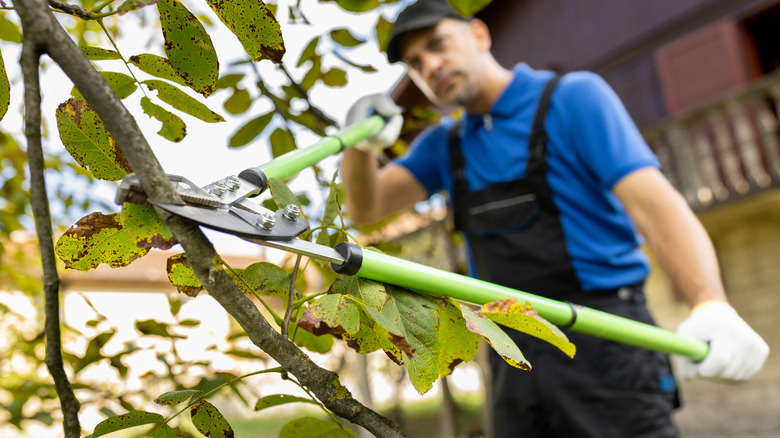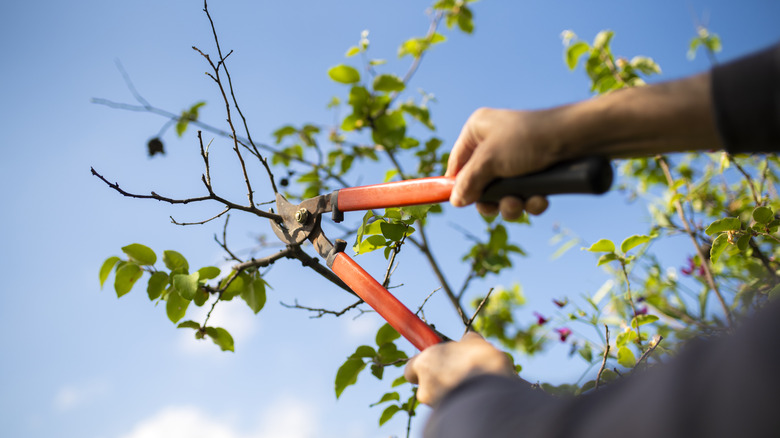The Popular Gardening Technique That's Accidentally Killing Your Trees
Tree maintenance is essential for a safe and beautiful yard, but one of the most common trimming techniques could actually be shortening the life of your trees. "Topping" is the practice of cutting back a tree's central leader or main branches to stubs in an attempt to control its size. While it may seem like a quick fix for overgrown trees, this method causes long-term damage and can even kill the tree.
Topping removes a tree's natural structure and leaves behind large, open wounds. These stubs don't heal properly, making them vulnerable to disease and decay. Worse, the tree responds with a flush of weak, poorly attached shoots, sometimes called "water sprouts", that grow rapidly but are structurally unsound. Often mistaken as a sign that the tree is regrowing a fresh set of leafy limbs, what is really happening is that the tree is using up the energy it needs to stay healthy by growing these shoots. Beyond structural concerns, topping undermines the long-term value of your landscape. Trees that are disfigured by poor cuts lose their natural form and aesthetic appeal. A topped tree also depreciates property value and often becomes a liability rather than an asset.
Topping reduces the tree's ability to photosynthesize, putting it under significant stress. A weakened tree is more likely to suffer pest infestations, internal rot, and branch breakage. Homeowners who top trees often find themselves facing more problems down the road, including hazardous limbs and costly removal bills. There are safer, healthier ways to manage overgrowth. Avoid this mistake while pruning the trees in your yard by focusing on maintaining a tree's natural shape while eliminating risks.
How to prune trees the right way
The best way to avoid the damage caused by topping is to follow proper pruning techniques that support both the health and structure of your tree. The most effective way to prune your trees always starts with a goal in mind. Whether it's to remove dead wood, improve shape, or reduce risk from weak branches, sticking to a plan gives you a guideline on what to focus on while cutting. The key is to make selective cuts that respect the tree's natural growth pattern based on the type of tree you are going to prune.
Focus first on removing damaged, diseased, or crossing branches. When reducing size, use a method called drop-crotch pruning, which is when a cut is made just above a smaller lateral branch that is at least one-third the diameter of the branch being removed. This helps guide future growth and avoids creating large wounds that won't heal properly. Always avoid cutting flush with the trunk or leaving long stubs. Instead, prune just outside the branch collar, where natural healing occurs. Never remove more than 25% of a tree's crown in a single season, as this stresses the tree and can trigger excessive, weak regrowth.
Young trees benefit from light annual pruning to develop strong structure, while mature trees often need less frequent cuts. For large or high branches, it's best to hire a certified arborist who follows ANSI A300 pruning standards. Proper pruning not only improves a tree's health, but also enhances its appearance and long-term stability.

